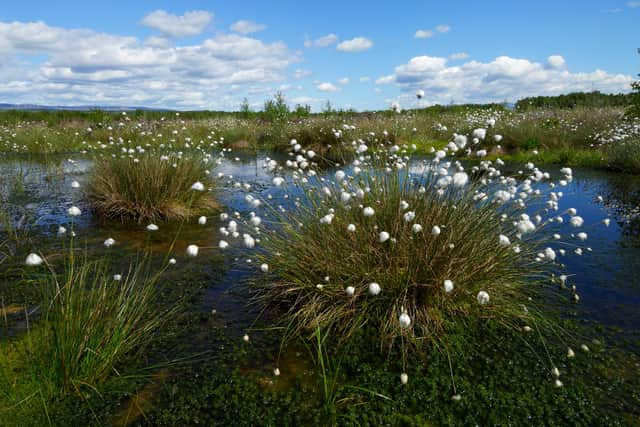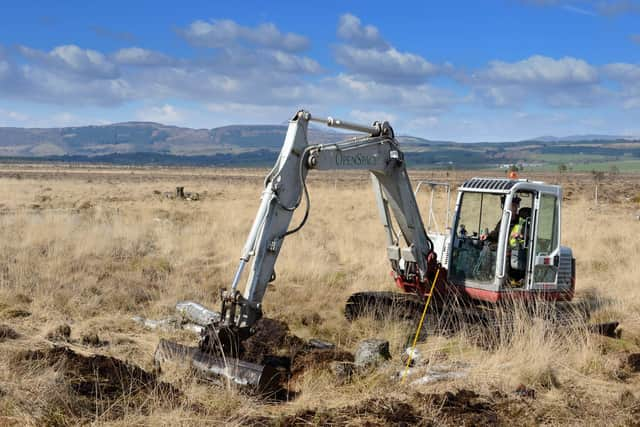How monitoring peatland 'breathing' could help save the planet
The same premise could soon be used to determine the condition of Scotland’s peatlands and decide whether they need emergency treatment.
As well as providing important habitat for other species, healthy peat bogs perform a crucial role in the battle to curb climate change by sucking up carbon dioxide and locking it in.
Advertisement
Hide AdAdvertisement
Hide AdHowever, when dried out and sickly they do the opposite, releasing stored carbon into the atmosphere and driving global warming.


New research suggests analysing how bogs ‘breathe’ from space could help identify depleted sites and guide restoration work.
The way bogs move, or breathe, can be influenced by many factors, including rainfall, water level, what vegetation grows there, the lie of the land and how it is managed.
Using satellites to measure this motion over time could help scientists assess the state of peatlands and the effectiveness of different repair techniques.
If developed on a national scale, the method could provide more accurate estimates of the amount, distribution, condition and associated carbon inventories of peatlands across Scotland, as well as a means of assessing the impact of investment in restoration.


It could also help to identify areas at high risk of peat instability, fire and erosion, and highlight where urgent remedial action might be needed.
The research project was a collaboration between the University of the Highlands and Islands, the University of Nottingham and government agencies NatureScot and Forestry and Land Scotland.
It used Satellite Interferometric Synthetic Aperture Radar (InSAR), which can map the movement of the ground’s surface – a technique developed with the University of Nottingham spin-off company Terra Motion.
Advertisement
Hide AdAdvertisement
Hide AdScientist Chris Marshall, from the Environmental Research Institute at North Highland College – part of the University of the Highlands and Islands – led the study.
He says modern developments in technology allows monitoring of peatlands “at a scale unimaginable a decade ago”, allowing restoration progress to be measured in real time.
“Bog breathing or peat surface motion gives a unique insight into the inner workings of the peatland including its landscape, hydrology and ecology,” he said.
Co-researcher David Large, a peatland specialist at the University of Nottingham, said: “This new tool allows us to see the landscape swell and contract in response to different environmental conditions.
“A healthy peatland is wet with lots of soft and spongy sphagnum mosses that swell and retain water.
“In contrast, drier peatlands are stiffer and unresponsive to the addition of water.
“The former moves like a beating heart, whereas a degraded peatland could be described as flat-lining.”
May Shirkhorshidi, NatureScot’s Peatland Action report manager, said: “Peatland restoration is a crucial nature-based solution to the twin crises of climate change and biodiversity loss, a key priority as we look towards the COP26 in Glasgow later this year.
Advertisement
Hide AdAdvertisement
Hide Ad“While in the early stages of development, we are excited about the long-term potential of this research, which could help Peatland Action to target priority areas for restoration and offer a scientifically proven way of monitoring changes in peatland condition following restoration.”
A message from the Editor:
Thank you for reading this article. We’re more reliant on your support than ever as the shift in consumer habits brought about by coronavirus impacts our advertisers.
If you haven’t already, please consider supporting our trusted, fact-checked journalism by taking out a digital subscription.
Comments
Want to join the conversation? Please or to comment on this article.
